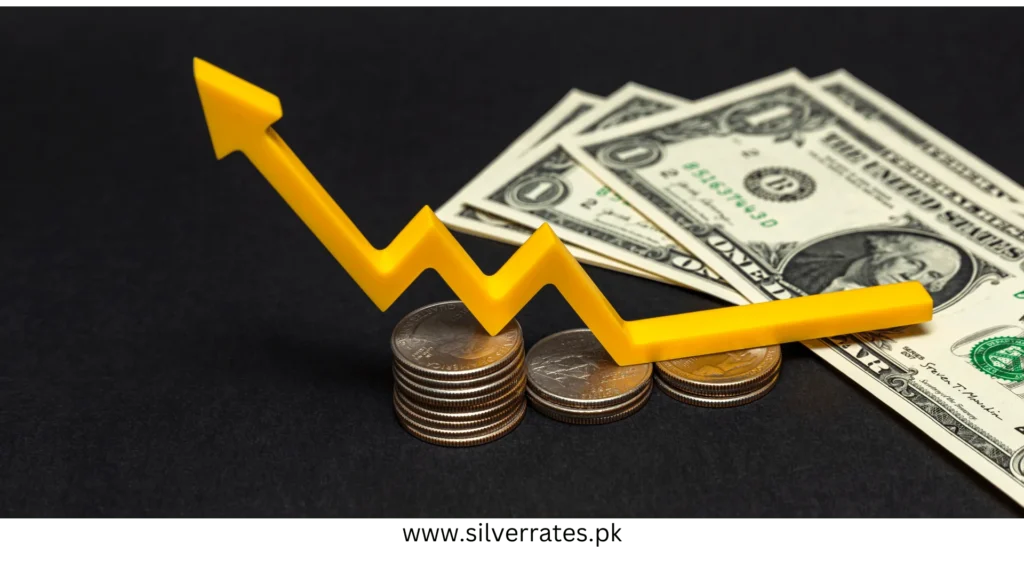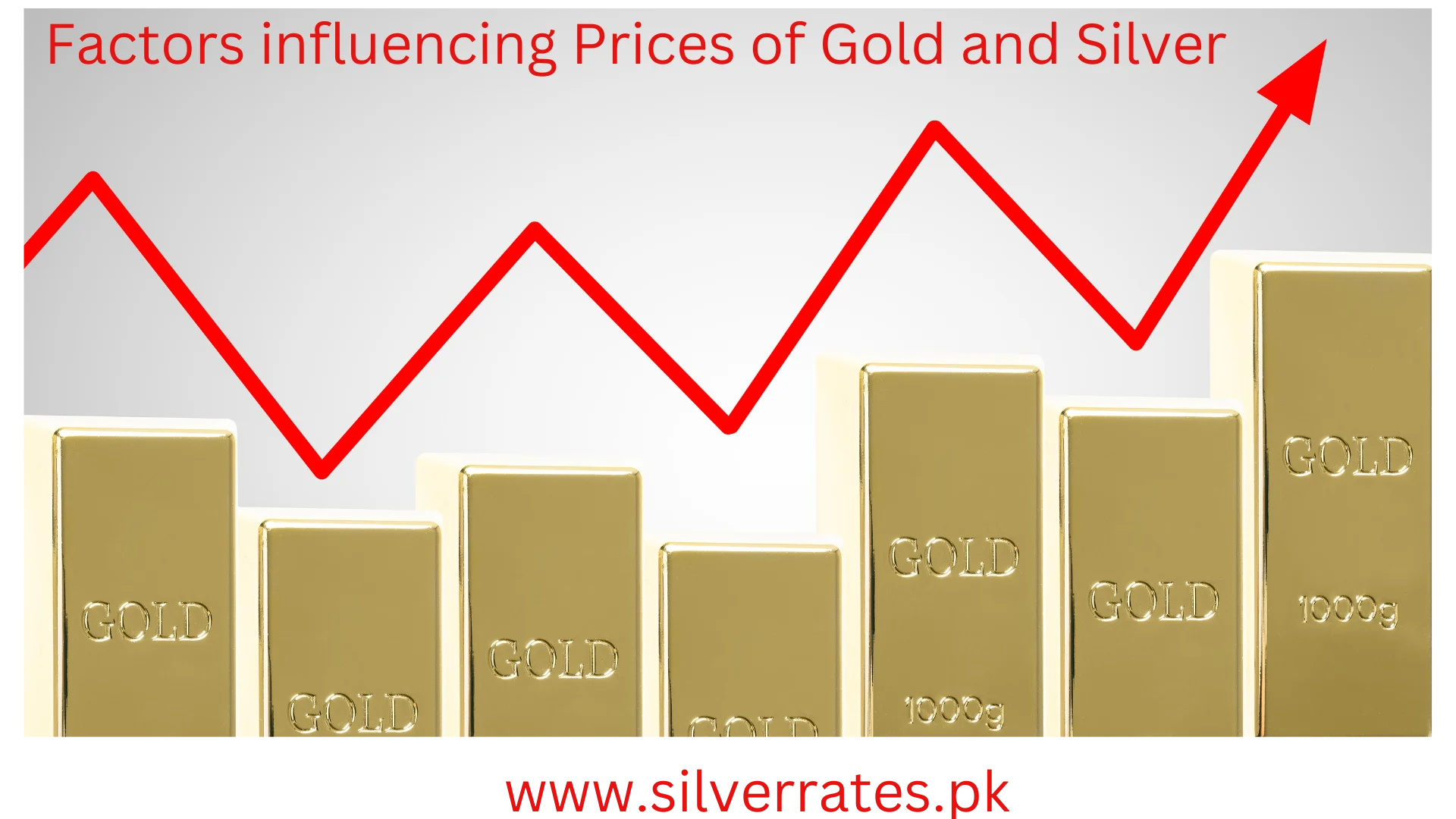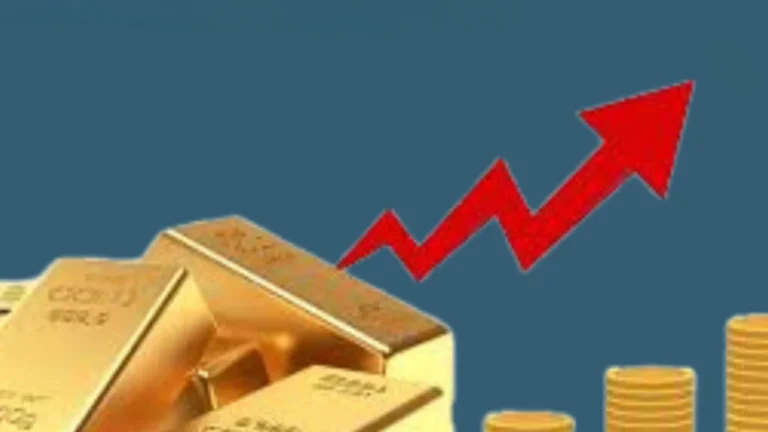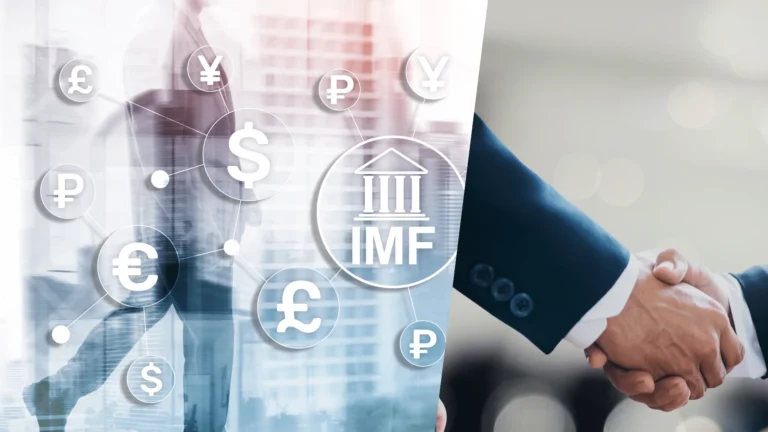Factors Influencing Prices of Gold and Silver
Economic Factors
Factors influencing Prices of Gold and silver including the economy, political events, demand and supply, and technological changes control the rates/prices of gold and silver. I have tried to list the most important and influential factors below.
1. Inflation
Inflation significantly impacts and influences prices of gold and silver as well as other precious metals, often driving up the value of gold and silver. Historically, during times of economic hardship and rising inflation, investors have turned to these metals as safe-haven assets.
This is because gold and silver have a limited supply and are tangible commodities, helping their value remain stable or increase when inflation is high. As investors move away from stocks, bonds, and other markets, the demand for precious metals rises, pushing their prices higher.
Additionally, gold and silver prices rise with inflation because they are priced in currencies like pounds or dollars. When inflation causes consumer goods to become more expensive, the value of gold and silver also increases since their prices are linked to the currency value, thereby climbing along with the inflation rate.
2. Interest Rate

The relationship between interest rates and the prices of gold and silver is complex and important. When interest rates go up, holding gold and silver becomes more costly. This is because gold and silver don’t earn interest or dividends.
Instead, the money invested in these metals could be earning interest in a savings account or other investments. So, when interest rates rise, people might prefer those interest-earning options, reducing the demand for gold and silver and causing their prices to drop.
On the other hand, when interest rates are low, the cost of holding gold and silver is lower. In this situation, people often turn to these metals as safe investments, especially when returns on other investments are low. This increased demand usually leads to higher prices for gold and silver.
3. Currency Value
The price of gold usually moves in the opposite direction of the U.S. dollar. When the dollar is strong, gold prices tend to be lower because gold is priced in dollars. A strong dollar makes gold more expensive for people using other currencies.
On the other hand, when the dollar is weak, gold prices go up. This is because a weaker dollar allows people to buy more gold for the same amount of money, increasing demand and driving up the price.
2. Political Events
Political events can greatly affect the price of gold bullion. These events include changes in government policies, political instability, and geopolitical tensions. Here are some examples:
Government Policies
Changes in government policies can significantly impact gold prices. For example, if a government raises interest rates or tightens monetary policy, gold prices may fall as investors look for higher returns elsewhere. Conversely, if a government implements policies that weaken its currency or cause inflation, gold prices may rise as investors seek a safer investment.
Political Instability
Political instability can also affect gold prices. If there is unrest or uncertainty in a region or country, investors may turn to gold for safety. For example, during a coup or civil unrest, gold prices may increase as investors seek a haven.
Geopolitical Tensions
Geopolitical tensions can also influence gold prices. When there is tension between countries, investors may worry about potential conflicts or disruptions to the global economy. In such cases, gold prices may rise as investors look for a secure investment.
Pakistani Scenario
In Pakistan, political events can also impact gold prices. If the Pakistani government increases interest rates or tightens monetary policy, gold prices may drop as investors look for better returns elsewhere. But if the government’s policies weaken the Pakistani rupee or cause inflation, gold prices might go up as people look for a safer place to invest their money.
Political instability in Pakistan, such as protests, political upheaval, or uncertainty in government, can lead to higher gold prices. People may buy more gold to protect their wealth during uncertain times.
Tensions with neighboring countries or other geopolitical issues can also drive up gold prices in Pakistan. When there is fear of conflict or economic disruption, investors often turn to gold for security, pushing up its price.
3. Supply and Demand
The law of supply and demand influences all precious metals, but it affects each metal differently due to its unique uses. Here’s a brief overview of how supply and demand impact the prices of the most common investment metals:
Gold
Gold is the most popular precious metal for investors. The main demand for gold comes from the investment market. When stock and currency markets perform poorly, investors typically turn to gold as a safe and tangible store of value, driving up its demand and price. Check Today’s gold Rate Here
Gold is also used in jewelry and electronics, which can affect its demand, but these changes are usually less significant compared to those caused by market downturns. Gold has a limited supply, and mining output remains fairly consistent year to year, making the supply of gold relatively stable.
Silver
Like gold, silver’s price is significantly influenced by the investment market. However, silver also has many industrial uses, such as in thermal conductors and antimicrobial coatings on medical equipment, which strongly impact its demand. You may also check today’s silver Rate Here.
4. Technological Advances
Technological advancements have a profound impact on the valuation of precious metals. Innovations in green technologies, electronics, semiconductors, and healthcare directly affect the demand and usage of these metals.
For example, the growing popularity of renewable energy technologies has boosted the demand for silver, while ongoing innovations in electronics have significantly influenced gold prices. It’s essential to monitor market trends and recognize the lasting significance of technological upgrades as technology progresses.

5. Central Bank Policies and Actions
Central banks are major players in the precious metals markets, holding substantial reserves of gold and silver. These reserves serve as a stable store of value and provide a safeguard against currency fluctuations and economic uncertainties.
The decisions made by central banks regarding their gold and silver reserves can deeply influence the supply and demand dynamics in these markets.
6. Economic Reports
Economic Reports can also be one of the factors influencing the prices of precious metals on things like economic growth, employment, and manufacturing affecting how people feel about the economy. Good news can reduce the need for safe investments like gold and silver, lowering prices. Bad news can increase demand for these metals, raising prices.
Market responses to economic data releases may exaggerate their true significance. Such as gold, there isn’t a strong long-term correlation between these data points and gold prices. However, short-term fluctuations in precious metal prices can occur if the data surprises in either direction, particularly if there’s an indication of potential changes in short-term interest rates.
Conclusion
In this article, I have tried to explain almost all key factors, from economic conditions and political events to supply and demand and technological changes. Understanding these factors can help you make better investment decisions and make good investment portfolios of the precious metals market more effectively.







